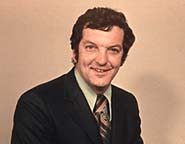
Earl Foreman didn’t merit an obituary when he passed away last month.
They should have written a book.
That’s the only way to do justice to the wild and crazy ride Foreman took through professional basketball as an owner, investor, and wheeler-dealer.
Foreman, 92, passed away Jan. 23 in Chevy Chase.
He’d worked for years in D.C. as a lawyer and was the creator and commissioner of the Major Indoor Soccer League. He also held a minority stake in the Philadelphia Eagles of the National Football League in the 1960s.
And, he holds a signficant place in Washington, D.C. basketball lore and in the checkered history of the old American Basketball Association, where he seemed to have a hand in every significant transaction in the league during the 1970s.
Foreman – along with the much better-known Abe Pollin – was one of the original investors in the Baltimore Bullets NBA franchise. After almost a decade of fan indifference in Baltimore, the team moved to Washington (Foreman was gone from ownership by then) and captured the NBA title in 1978. The NBA Finals MVP on that team was burly center Wes Unseld, whose contract had been negotiated by Foreman.
The Bullets, under Pollin’s sole ownership, eventually became the Wizards and moved into their brand-new downtown arena (now known as Verizon Center) in 1997.
Foreman – after Pollin bought out his share of the Bullets in the mid-1960s – actually put a pro basketball team in Washington, D.C. before Pollin did.
Foreman purchased the ABA champion Oakland Oaks, who were beset by financial troubles and poor attendance despite having won the league title in 1968-69, and moved them to Washington.
The Capitols (or Caps) weren’t destined to last long – and they didn’t. They went 44-40 in their lone year in Washington before Foreman moved the team to Virginia, where it became the Squires.
Foreman failed to consummate the deal to move the Oaks until August of 1968, and the late change in ownership and location created all sort of headache for Foreman and league officials. As a result, Washington remained in the ABA’s Western Division, which created some brutal road trips during the season.
“Home” games were played at the old D.C. Coliseum, north of Union Station, which was then a run-down part of town. Attendance was sparse, but the team played only about a third of its games there, anyway. There were even “home” games playd in places like Albequerque, New Mexico and Wichita, Kansas.
“It was a suicide schedule,” Washington coach Al Bianchi said in “Loose Balls,” the oral history of the ABA. “This was back when the ABA was playing a lot of doubleheaders and we always seemed to be the first game, on the road … The whole thing was a mess.”
One of the reasons to Caps were a draw everywhere around the league was the presence of Hall of Famer Rick Barry on the team. Barry was perhaps the biggest name to jump from the established NBA to the fledgeling ABA.
He’d wanted to stay in the Bay area when the team moved, but came to D.C. and averaged 27.7 points in 53 games (second in the league) despite an injury-shortened season. The point guard on that Washington team, by the way, was future ABA/NBA/college coach Larry Brown. Brown led the league in assists (7.1), one of three straight seasons he led the ABA in that category.
Barry balked at moving south to Virginia and threatened to go back to the NBA when he learned of Foreman’s plans to move again. But the league needed a star of Barry’s magnitude to remain relevant and everyone knew it. It would only help the league to have someone of Barry’s marquee value playing in New York, where he’d get plenty of media coverage. So, Foreman sold him to the Nets, who were then playing on Long Island. Nets owner Roy Boe had the money to pay Barry his asking price, so the deal was struck. Barry played only two seasons for the Nets before jumping back to the NBA, but the publicity generated by his presence in New York helped keep the league going.
Virginia was also a financial disaster for Foreman as well. Money was always tight. Sheriffs even showed up at the Squires arena one night and vowed to forfeit the game until the front office met some unpaid financial obligations.
Another time, a Squires game against San Antonio had to be called off when both teams had their luggage and equipment lost by the airlines. Another game in Hampton was delayed 45 minutes one night because a malfunctioning furnace left the temperature inside the area at a crisp 58 degrees.
Clearly, conditions in this particular professional basketball league were something less than professional.
But Foreman had his moments. He helped discover and sign Julius Erving to his first pro contract and then did the same thing with Dr. J as he did with Barry – sent him to the New York franchise when it appeared another major drawing card for the league might bolt to the NBA.
Something similar happened a third time for Foreman with another future Hall of Famer, George Gervin. Gervin didn’t even finish his college career at Eastern Michigan after an on-court fight and academic problems forced him to leave school. Foreman signed him off a semipro team, but eventually had to sell the future NBA scoring champion because of the Squires’ financial troubles.
“Earl Foreman may have been the most creative mind in the ABA,” former Carolinia Cougars owner and ABA Commissioner, once said. “He never had any money, but he always had a lot of ideas.”